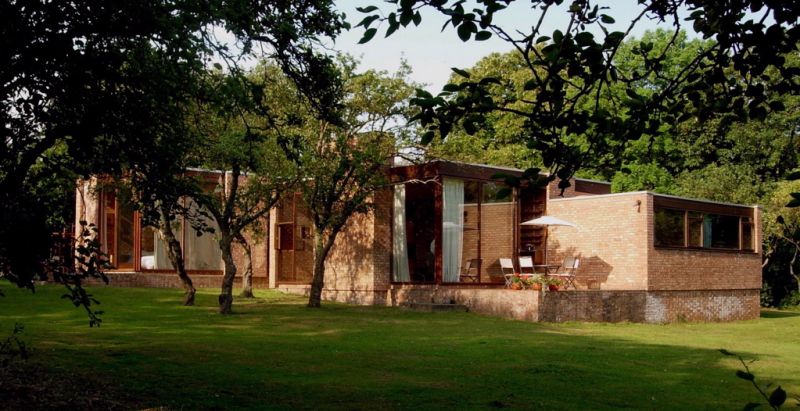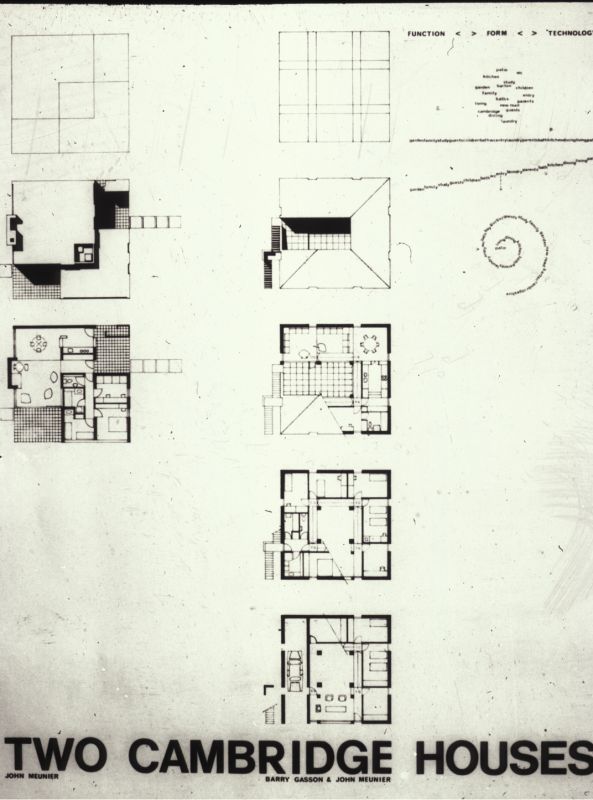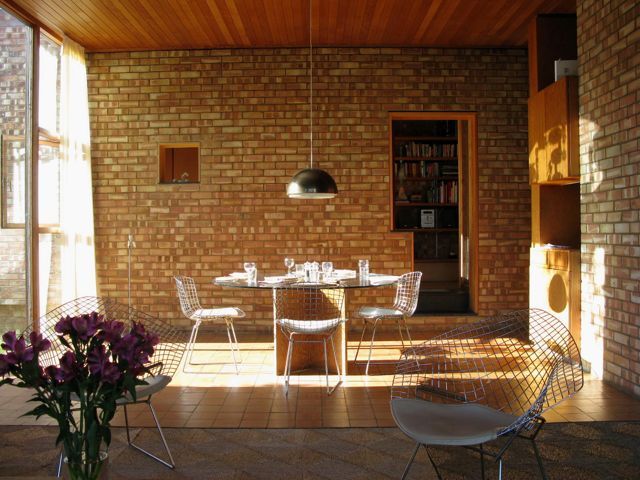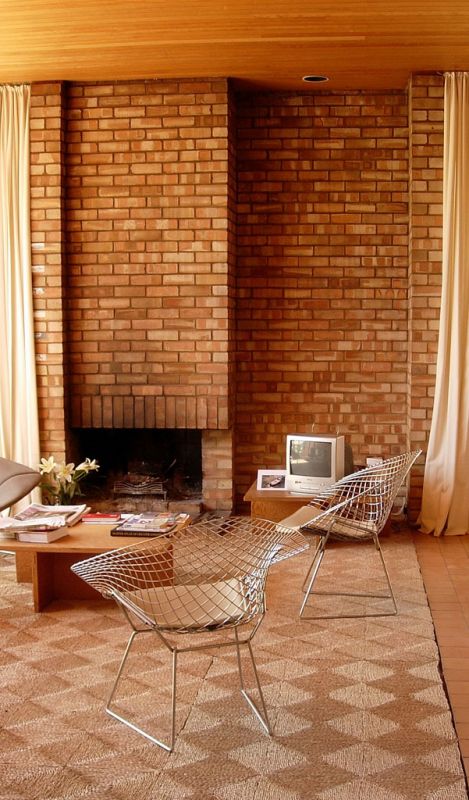
Photo courtesy of British Listed Buildings
Designed and built in 1964, the Meunier House was designed by renowned, modern day architect John Meunier. It’s well-known for the many unique features including the flat roofs, Fletton brick, and the intersecting square design.
John Meunier has been known over the years for his unique approach to architecture. He graduated from Cambridge University in England and studies at Harvard University, as well. After spending many years designing, Meunier began working in education. He was the director of the School of Architecture and Interior Design at the University of Cincinnati for about a decade. In addition, Meunier was a part of the faculty at Cambridge University in England for about 14 years. Professor Meunier has been invited as a guest lecturer and critic at many schools including Yale and Harvard.
Most recently, Meunier was the dean of the College of Architecture and Environmental Design at Arizona State University. He held the position for 15 years before taking a sabbatical to film desert cities from all across the globe. He is currently working with Insight Media to create a series of educational videos throughout his travels.
The Meunier House from 1964
John Meunier’s first significant building design, the Meunier House provides a look at his unique style. Composed of two intersecting squares, the higher square containing the living, kitchen, and dining areas, and the lower square containing the bedrooms and a study, the home is a demonstration of what Meunier described as “an English Brutalist version of a Frank Lloyd Wright Usonian house.” However, his home is much more proportional in layout than those of his contemporaries. Many see this home as foreshadowing of what was to come in his later commission, in partnership with Brit Andresen and Barry Gasson, for the Burrell Museum in Glasgow, Scotland.

Photo courtesy of Oz.E.Techture
Almost simultaneously, Meunier was design and building a second home in Barton for J. Wendon and his wife. The homes were so closely related, that the plans were drawn up on the same schematic which outlined how the overlapping squares would create two separate living areas for the future residents. He gave the home large windows to bring in the light and allow residents to view nature while within the comforts of home.
Of the two homes, Meunier described the archetypical intersection of nature and building in modern design, “I find it both necessary and natural that in our man-made environment we will find an oscillation between Natural and Customary Beauty, between stable classicism and dynamic modernity. I would hope that you will find that oscillation in the plans of both my house and the Wendon house.”

Image courtesy of British Listed Buildings
The simplicity in design reflects the work and experience of Meunier from Harvard where he worked with Christopher Alexander and Serge Chermayeff on the book 1962 Community and Privacy. However, the house was built outside of Cambridge, England in the town of Caldecote where he was currently positioned as the Junior Lecturer in the Department of Architecture at Cambridge University.

Photo courtesy of British Listed Buildings
Meunier wrote about this specific house, saying, “beauty should be a novel experience, and this is rarely comfortable. This house is an attempt to achieve some sort of nobility — to create out of space, not a cozy living room, but something that elevates rather than comforts.”
Meunier House Features
The home is a single-story home featuring the two 40-foot squares, forming two terraces. The facades offer a completely blank north face and an open south face. Timber windows are built into the design with exposed Fletton bricks found inside. Buff quarry tile floors are found throughout with built-in cupboard shelving, fixtures made of beech and pine, along with Columbian pine ceilings.

Photo courtesy of British Listed Buildings
Meunier was only able to build this home due to Cambridge University’s policy to grant second mortgages to faculty members. With this, Meunier was able to design and build the home without any financial equity at his disposal. Likely in due in part to this, Meunier was very finically conservative in the materials he selected for the home. The Fletton brick selected are a very popular material still used today, as they are low cost and are relatively sturdy. Still, he used his skill to craft the materials available into a what is clearly a stunning final product that will likely be referenced for years to come.